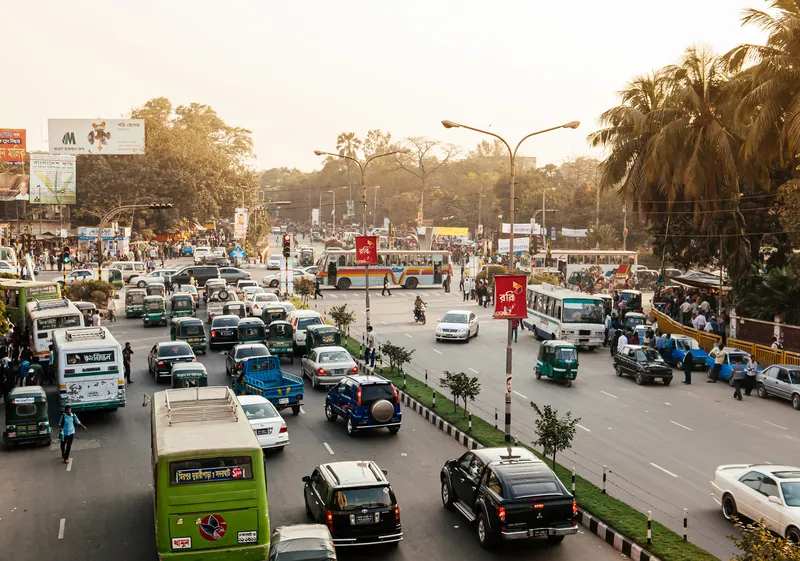Plans are in hand for a radical new 225km raised highway to connect Bangladeshi capital Dhaka with the city of Chittagong. An elevated highway design is required due to the low-lying terrain along the country’s coast where the highway would run, as the area is prone to frequent flooding. However raising the roadway is also boosting the cost of the project substantially. The work is likely to cost in the region of US$8.91 billion according to estimates. As a result, the Bangladesh Government is having had to
June 8, 2016
Read time: 2 mins
Plans are in hand for a radical new 225km raised highway to connect Bangladeshi capital Dhaka with the city of Chittagong. An elevated highway design is required due to the low-lying terrain along the country’s coast where the highway would run, as the area is prone to frequent flooding. However raising the roadway is also boosting the cost of the project substantially. The work is likely to cost in the region of US$8.91 billion according to estimates. As a result, the Bangladesh Government is having had to consider various funding solutions due to its budgetary constraints.
Close neighbour China has shown an interest in providing the necessary funding. And state-run Chinese contractor China Railway Construction Corporation (CRCC) has suggested it could construct the route on a build-operate-transfer (BOT) basis.
A new highway is desperately needed to help develop the Bangladesh economy. While the existing route between Dhaka and Chittagong is being widened at present, even this upgrade will not meet projected traffic demands and it will also remain at risk from flooding.
Should agreements be concluded and the elevated highway be constructed, it would be a global landmark project in terms of civil engineering. The project is likely to be extremely challenging due to the difficulty of the terrain, with logistics, geology and the area’s unsettled climate all providing major potential hurdles. However Chinese contractors do have extensive experience in constructing raised high speed railway lines in areas of difficult ground in China, and much of this expertise may be applicable for the Bangladesh highway project.
Close neighbour China has shown an interest in providing the necessary funding. And state-run Chinese contractor China Railway Construction Corporation (CRCC) has suggested it could construct the route on a build-operate-transfer (BOT) basis.
A new highway is desperately needed to help develop the Bangladesh economy. While the existing route between Dhaka and Chittagong is being widened at present, even this upgrade will not meet projected traffic demands and it will also remain at risk from flooding.
Should agreements be concluded and the elevated highway be constructed, it would be a global landmark project in terms of civil engineering. The project is likely to be extremely challenging due to the difficulty of the terrain, with logistics, geology and the area’s unsettled climate all providing major potential hurdles. However Chinese contractors do have extensive experience in constructing raised high speed railway lines in areas of difficult ground in China, and much of this expertise may be applicable for the Bangladesh highway project.








